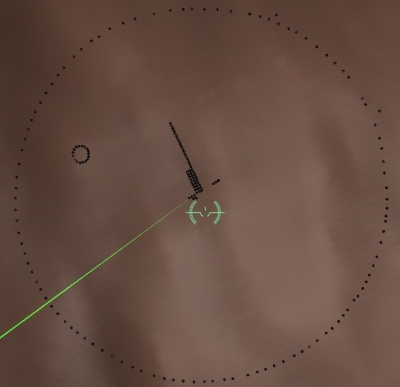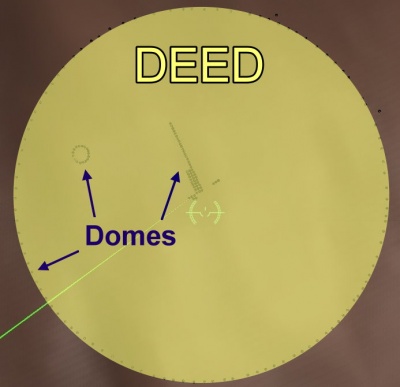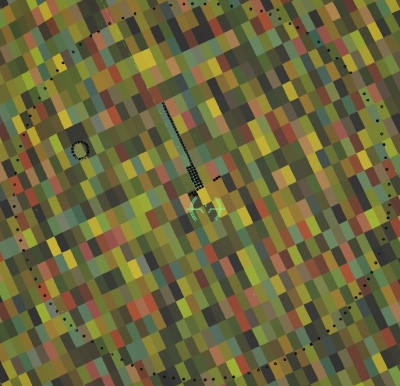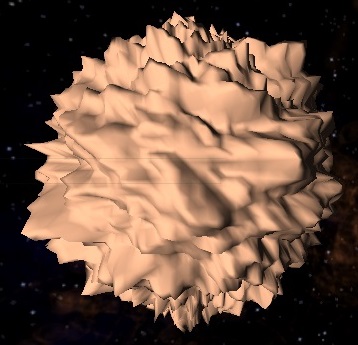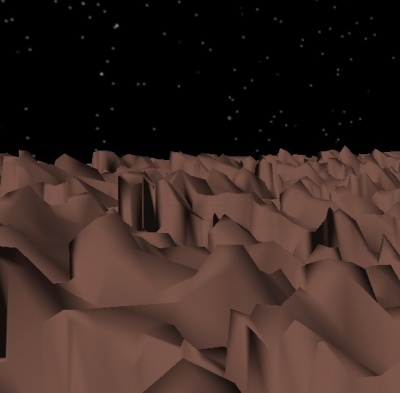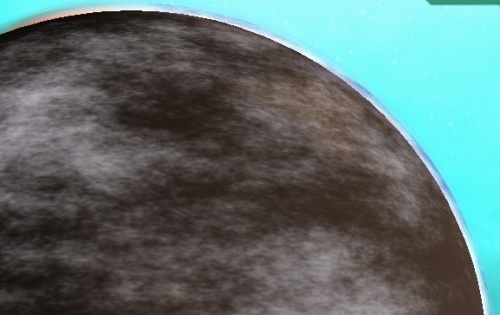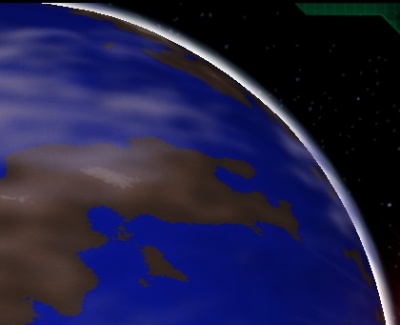SSformattestpageSS
DO NOT DELETE
Planet Evaluation for Colonization
The primary focus for many players is to develop a colony which is suitable to their needs. Due to the randomness of planet types, finding suitable locations to build a colony can be challenging. This page will give you basic information to efficiently find useful locations for colonization.
Contents |
What is a colony?
A colony is a player-owned location outside of the inner 8 Apollo systems. Players can purchase a deed for the right to construct a colony on the surface of a planet or moon. Since there is no existing land mass (outside of the inner 8 systems) that has oxygen in the atmosphere, the only method for colonization is to build domes in a colony on the surface of a planet or moon. A deed can support thousands of domes.
The pictures below show a circular deed of the same colony. Each black dot on the surface of the planet is a dome. Domes can be placed anywhere in the deed in any formation.
Gathering resources is the primary reason for building colonies. Using the show mb.samplemapoverlay command of a probed planet, resource distribution is represented as colored rectangles. The picture below is the same colony as the pictures above.
Surface Structure
For a colony to support domes, the surface of the planet or moon needs to be relatively flat. Mountainous and jagged surface will not support domes. Domes can be constructed in a liquid (under water or any large body of fluid), but currently it is not useful and not recommended. The best location for a colony is on a flat surface with no liquid.
These are examples of bad colony locations:
Atmosphere
For first-time explorers, it is highly recommended that the location of their new colony is constructed on a planet or a moon with an an atmosphere, since colonies need gasses for domes to support human colonists. To determine if a planet or moon has an atmosphere, fly to View Range and look at the edges. If there is a "halo" effect around the edge, or if the planet has fluid, then it has an atmosphere. Not all atmospheric planets and moons have the halo effect, so some investigation may be needed.
Domes can gather gasses from the surrounding atmosphere and split components into useful gasses. The best distribution of gasses is an atmosphere that contains the elements Nitrogen (N), Oxygen (O), and Hydrogen (H) available in some form.
For example: CH4 can be split into Carbon and Hydrogen gas. NH3 can be split into Nitrogen and Hydrogen gas. H2O can be split into Hydrogen and Oxygen gas. CO2 can be split into Carbon and Oxygen gas.
Carbon (C) gas is currently useless and is vented from domes. Hydrogen, Nitrogen, and Oxygen can be contained as a gas in a dome or as a commodity resource which can be stored in a warehouse. Domes can combine Hydrogen and Oxygen to make H2O (water).
Each dome needs at least 400,000 tons of gasses in its atmosphere. A class 12 ship can only carry 20,000 tons, so a colony with a planetary atmosphere is almost critical.
Atmosphere Analysis
To see the gas contents of an atmosphere, fly down to the planet surface. You can take a gas reading by using the computer command: show rs.composition . If you receive the message "error, no medium", it means you are above the atmosphere or the planet does not have an atmosphere.
In the example below, this atmosphere reading demonstrates a good balance of needed gasses.
CH4 can be split for Hydrogen (for hyperdrive fuel), NH3 can be split for Nitrogen gas for domes and Hydrogen, and CO2 can be split for Oxygen for domes. There is even natural Nitrogen in the atmosphere. Any reading below 0.02 is non-existent on the planet or too little to be useful. Since domes need some water and there is none in the atmosphere, the dome can combine Oxygen and Hydrogen to form H2O.
Soil
To learn how to obtain soil samples, see the Probing Tutorial.
Geo 5. Concentrations.
Silicon concentration determines the yield for all other resources. The higher the silicon content, the lower the yield.
Asteroid Belts Gas Planets
Recommendations
Earth (rumoured to exist in the universe) Earth-like planet with oceans of H2O Atmosphere: 10% H2O, 24% O, 74% N, 2% CO2 Mineral Distribution: 20% Carbon, 20% Aluminium, 20% Iron, 0% Titanium. Mineral Concentration: Geo 5
